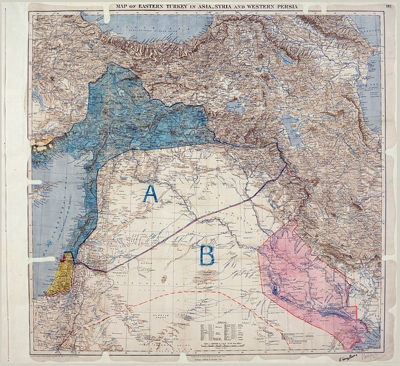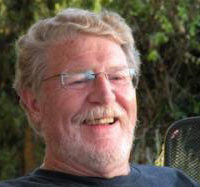
“So far as Syria is concerned, it is France and not Turkey that is the enemy” – T. E. Lawrence, February 1915
It was a curious comment by the oddball, but unarguably brilliant, British agent and scholar, Thomas Edward Lawrence. The time was World War I, and England and France were locked in a death match with the Triple Alliance, of which Turkey was a prominent member. But it was none-the-less true, and no less now than then. In the Middle East, to paraphrase William Faulkner, history is not the past, it’s the present.
In his 1915 letter, Lawrence was describing French machinations over Syria, but he could just as well have been commenting on England’s designs in the region, what allied leaders in World War I came to call “The Great Loot” – the imperial vivisection of the Middle East.
As Iraq tumbles into yet another civil war, it is important to remember how all this came about, and why adding yet more warfare to the current crisis will perpetuate exactly what the “Great Loot” set out to do: divide and conquer an entire region of the world.
There is a scorecard here, filled with names, but they are not just George W. Bush, Dick Cheney, Donald Rumsfeld and Condoleezza Rice – though the latter helped mightily to fuel the latest explosion – but names most people have never heard of, like Sir Tatton Benvenuto Mark Sykes, 6th Baronet of Sledmere, and Francois Georges-Picot. In 1915, these two mid-level diplomats created a secret plan to divvy up the Middle East. Almost a century later that imperial map not only defines the region and most of the players, but continues to spin out tragedy after tragedy, like some grotesque, historical Groundhog Day.
In 1915, the imperial powers’ major goal in the Middle East was to smother any expression of Arab nationalism and prevent any unified resistance to the designs of Paris and London. France wanted Greater Syria, Britain control of the land bridges to India. The competition was so intense that, while hundreds of thousands of French and British troops were dying on the Western Front, both countries secret services were blackguarding one another from Samara to Medina, maneuvering for position for when the Ottoman Empire finally collapsed.
The Sykes-Picot Agreement was the compromise aimed at ending the internecine warfare. France would get Greater Syria (which it would divide to create Lebanon), plus zones of influence in northern Iraq. Britain would get the rest of Iraq, and Jordan, and establish the Palestine Mandate. All of this, however, had to be kept secret from the locals lest they find out that they were replacing Turkish overlords with French and British colonialism.
The Arabs thought they were fighting for independence, but London and Paris had other designs. Instead of the lands between the Tigris and Euphrates rivers and access to the Mediterranean the Arabs had been promised, they would get the sun-blasted deserts of Arabia, and the rule of monarchs, who were easy to buy or bully.
However, to run such a vast enterprise through the use of direct force was beyond the power of even London and Paris. So both empires transplanted their strategies of using religion, sect, tribe and ethnicity, which had worked so well in Indochina, India, Ireland and Africa, to divide and conquer, adding to it a dash of chaos.
There are new players in the Middle East since Sykes and Picot drew up their agreement. Washington and Israel were latecomers, but eventually replaced both imperial powers as the major military forces in the region.
The enemy of the “Great Loot” was secular nationalism, and the U.S., France, and Britain have been trying to overthrow or isolate secular regimes in Iraq, Syria, Egypt and Libya since they first appeared. The rationale for the hostility is that secular regimes were run by dictators – many were – but questionably no worse than the Wahabi fanatics in Saudi Arabia, or the monsters the Gulf monarchies have nurtured in Syria and northern Iraq.
Why is Syria a dictatorship and Saudi Arabia is not? This past February, the Kingdom passed a law equating dissent, the exposure of corruption, or demands for reform with “terrorism” including “offending the nation’s reputation or its position.”
The list of names on the ledger of those who nurture terrorism in the Middle East is long. Yes, it certainly includes the Bush administration, which smashed up one of the most developed countries in the region, dismantled the Iraqi state, and stoked the division between Sunni and Shiites. But also the Clinton administration, whose brutal sanctions impoverished Iraq. And further back, during the first Gulf war, George H. Bush pounded southern Iraq with toxic depleted uranium, inflicting a massive cancer epidemic on places like Basra. It was Jimmy Carter and the CIA who backed Saddam Hussein’s rise to power, because the Ba’athist dictator was particularly efficient at torturing and killing trade unionists and members of the Iraqi left.
Not to mention members of the Gulf Cooperation Council – Kuwait, Saudi Arabia, Oman, the United Arab Emirates, Qatar, Bahrain, Morocco and Jordan – who fund the Islamic insurgency in Syria. Some of those countries may decry the excesses of the Islamic State of Syria and the Levant (ISIL), but it was they who nursed the pinion that impelled the steel.
Turkish Prime Minister Recep Tayyip Erdogan is also on that list. It is through Turkey’s borders that most fighters and supplies pass into Syria. So is the Obama administration, which farmed the insurgency out to Qatar and Saudi Arabia and is now horrified by the creatures that Wahabist feudal monarchies produced.
And don’t forget T.E. Lawrence’s French.
Paris has never forgiven the Syrians for tossing them out in 1961, nor for Damascus’s role in the 1975-91 Lebanese civil war that dethroned the French-favored Christian minority who had dominated the country since its formation in 1941.
The French have been enthusiastic supporters of the insurgency in the Syrian civil war and, along with the British, successfully lobbied the European Union to drop its ban on supplying the rebels with military hardware. Paris has also earned favor from Saudi Arabia by trying to derail efforts to find a solution to the conflict over Iran’s nuclear program. France is a member of the P5+1-France, the U.S., Russia, Britain, China and Germany – involved in talks with Teheran.
The Gulf Council praised France’s attempted sabotage, and Paris promptly landed a $6 billion contract to upgrade Saudi Arabia’s air defense system. It is negotiating to sell $8 billion in fighter-bombers to the Emirates and almost $10 billion worth to Qatar.
Saudi Arabia recently donated $3 billion in aid to the Lebanese Army on the condition that it is used to buy French weapons and ammunition. It is a somewhat ironic gift, since the major foe of the Lebanese Army has been Saudi-supported Wahabists in the country’s northern city of Tripoli.
Apparently French President Francois Hollande met with the foreign ministers of Jordan and Emirates last September to discuss a plan for Pakistan to train a 50,000-man Sunni army to overthrow the Syrian government and defeat al-Qaeda-affiliated jihadist groups.
Members of that army may already be on their way to Europe, much as the mujahedeen from Afghanistan did a generation ago. According to western intelligence services, more than 3,000 European Union citizens have gone to fight in Syria, ten times the number who went to fight the Soviets in Afghanistan. The gunman who killed four people May 24 at the Jewish Museum in Brussels was a veteran jihadist from the Syrian civil war.
For now, the Gulf monarchies see themselves as pulling the strings, but they have virtually no control over what they have wrought. Those Wahabi fanatics in Syria and northern Iraq may do what Osama bin-Laden did and target the corruption of the monarchies next.
The Gulf countries are rich but fragile. Youth unemployment in Saudi Arabia is between 30 and 40 percent, and half the country’s 28 million are under 25 years of age. In other Gulf nations a tiny strata of superrich rule over a huge and exploited foreign work force. When the monarchies begin to unravel, the current chaos will look like the Pax Romana.
But chaos has always been an ally of imperialism. If things fall apart and mayhem rules, governments and bankers in Paris, Zurich or New York have not been overly bothered. “The agenda has always been about imposing division and chaos on the Arab world,” wrote long-time peace activist Tom Hayden. “In 1992, Bernard Lewis, a major Middle East expert, write that if the central power is sufficiently weakened, there is no real civil society to hold the polity together, no real sense of common identity … the state then disintegrates into a chaos of squabbling, feuding, fighting sects, tribes, regions and parties.”
Military intervention by the U.S. and its allies will accelerate the divisions in the Middle East. If the White House is serious about stemming the chaos, it should stop fueling the Syrian civil war, lean on the Gulf Monarchies to end their sectarian jihad against Shiites, pressure the Israelis to settle with the Palestinians, and end the campaign to isolate Iran.
And tell the French to butt out.
This article was originally posted at the author’s blog, Dispatches From the Edge.
Photo: Sykes-Picot Agreement map carving up the Middle East for Britain and France, May 8, 1916. Wikipedia











